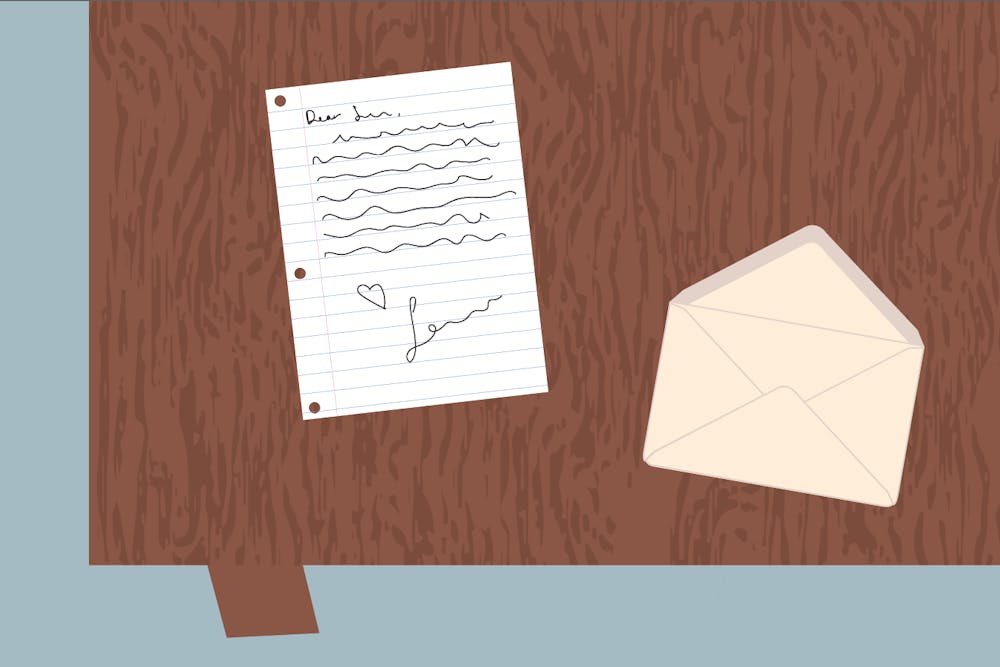The art of letter writing is not dead, but it is dying—and it’s ready for a rebirth.
Sending handwritten letters seems antiquated, especially when social media is so easily accessible. But by relying solely on digital communication, we often sacrifice intimacy for convenience.
Letter writing is still worthwhile, and the feeling of finding a handwritten letter in your mailbox is like no other. “It’s like a little gift,” Tamara Gelband (C ’21) says. “It feels more personal [than a text].”
While her friend studied abroad in Barcelona, she and Gelband sent letters back and forth. “I don’t think I had ever written letters until college when one of my best friends went abroad,” she says. “She sent me a letter, and I just thought it was really cute. It kind of made me feel like … I had a piece of her with me.”
Despite being nearly 4,000 miles apart from each other, Gelband’s and her friend’s letters provided a tangible, physical connection. “[Letter writing] is really helpful for when you’re long distance with people,” she says. “It gives you a [sense] of being together. Texting is fine, but it’s just so informal and fleeting, whereas I kept all the letters she sent me. I think it’s cool that in 20 years I can be like, ‘Oh, kids, these are my friend's letters.’”
Not only can letter writing help strengthen pre–existing relationships, but the art can help create new relationships as well. Soon after Penn announced that the fall semester would be remote, Giselle Wagner (C ’24) and several other first–year students organized pen pal pairings within the Class of 2024.
“We decided to start writing letters to each other and other people to create a sense of community when we can’t be together in person,” Wagner says. “I thought that using the Postal Service would not only support it but also create something tangible [for first years].”
Especially for establishing relationships, letter writing allows you to have deeper, more meaningful conversations than you might have over text. “It’s a long–term thing rather than something short–lived,” Wagner says. “[With] text, you typically have more surface–level conversations, while in letters, … going about writing each letter, each word, each sentence is something more intimate.”
Taking the time to handwrite your thoughts onto paper can feel cathartic. “I try to use letters kind of like a diary in a way,” Gelband says. “Like in a hundred years, if archaeologists find this, they’ll be like, ‘Wow, she really invited that boy to formal.’ I wouldn’t really go on and on about things that happened in my life for two pages in a text because people would be annoyed by that—versus in a letter, you get a peek into someone’s thought process. … It’s like a level of self–disclosure that you can get to in in–person conversations but [not] when texting.”
There’s a certain permanence to letter writing, too. Letters are something you can keep and treasure forever. Gelband stores every letter she receives in a folder to look back on. “I think it’s so cool, and maybe the fact that nobody sends letters anymore makes them so much more special,” she says. “I’ve kept the ones people have sent me, and if I’m having a bad day, then I’ll go through them. It’s nice to remember … what we were talking about.”
Now, as we’re separated from our friends and family, it’s more important than ever to maintain connections. “Letters should be more widely used, especially when we’re in the midst of a pandemic and can’t have the connections that we had before,” Wagner says. “It can substitute for past ways of communication and relationship–building. … Also, it’s allowing for the widespread community to benefit from it in supporting the Postal Service and those who work with the Postal Service.”
Send a letter to your friends, your grandparents, or meet someone new through volunteering with Penn Pals. Support the USPS by buying stamps and small businesses by purchasing greeting cards on Etsy or from your local independent bookstore. Letter writing only requires a bit more effort on your part, but it means so much more to those who receive your letters.
“It’s a nice way to show someone you care, and it’s not expensive," Gelband says. "It shows that someone put in more than the five seconds it takes to type or voice–to–text something. It takes time and effort, and that’s important—it shows how much you care.”

